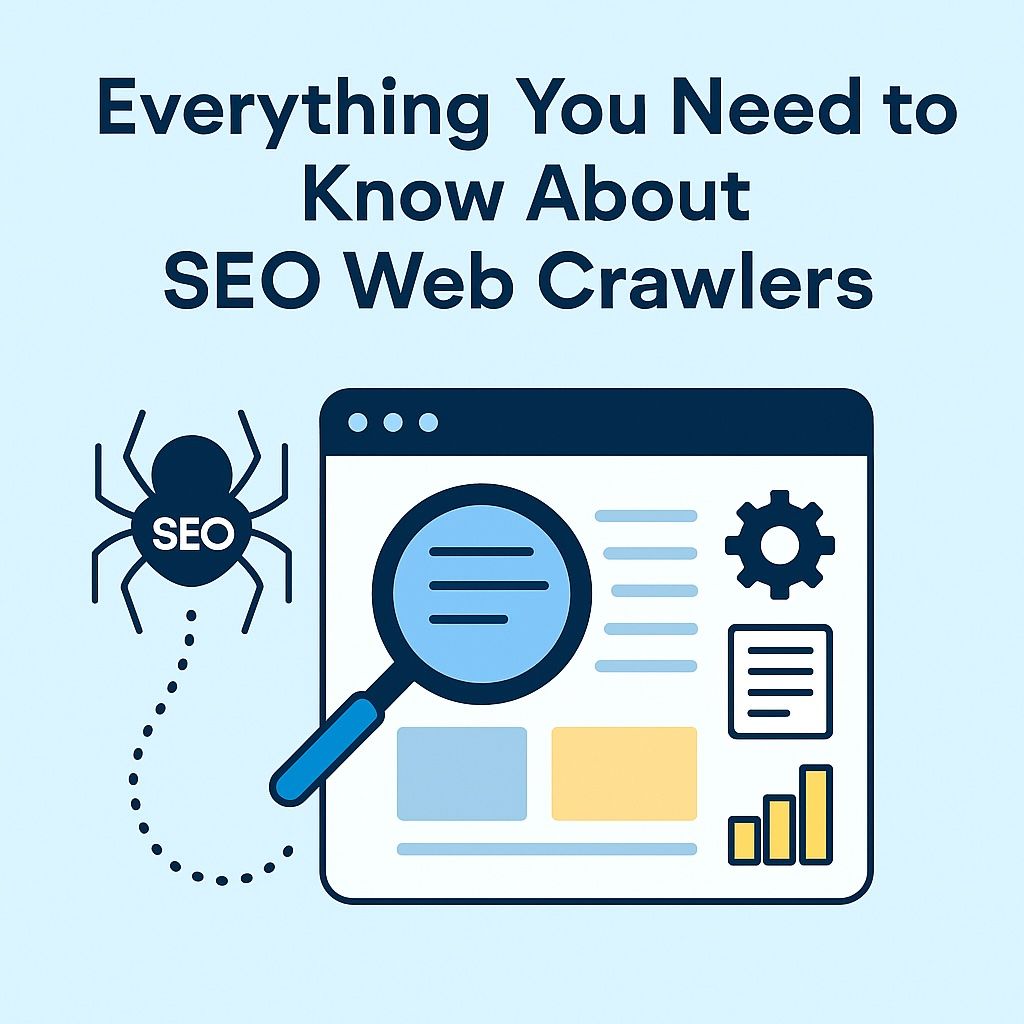Everything You Need to Know About SEO Web Crawlers
In today’s digital world, getting your website noticed by search engines is key — and that’s where SEO web crawlerscome in. These tools work quietly in the background to help search engines find, understand, and rank your website.
No matter if you run a business, work in marketing, or are just starting with SEO — learning how web crawlers work can help more people find your website online.
In this guide, we’ll show you what crawler SEO means, how web crawlers work, and how they can help more people find your website.
Crawler SEO
Crawler SEO refers to the practice of optimizing a website so that it can be efficiently discovered and indexed by search engine bots, also known as web crawlers or spiders. These bots “crawl” through your website’s pages, following links and analyzing content, structure, and meta data.
Why Crawler SEO Matters
If a crawler can't easily access or understand your site, your content won’t appear in search results—no matter how great it is. Here’s what effective crawler SEO does:
- Improves crawlability: Ensures all important pages are reachable and indexable.
- Eliminates crawl waste: Prevents bots from wasting resources on duplicate or irrelevant content.
- Boosts ranking signals: Optimized crawling often improves load speed, internal linking, and content clarity.
Key Components of Crawler SEO
To optimize for web crawlers, consider these foundational tactics:
1. Create a Clear Site Architecture
- Use a flat structure (ideally 3 clicks or fewer to reach any page).
- Ensure a logical URL hierarchy (e.g., /category/subcategory/page).
2. Improve Internal Linking
- Link to high-value pages from other relevant pages.
- Avoid orphaned pages—ensure every page has at least one internal link pointing to it.
3. Optimize Robots.txt and XML Sitemaps
- Your robots.txt file should explicitly allow or disallow crawler access to certain sections.
- Submit a sitemap to Google Search Console and Bing Webmaster Tools.
4. Fix Crawl Errors
Use tools like:
- Google Search Console: For crawl stats and indexing status.
- Screaming Frog or Sitebulb: For advanced crawl diagnostics.
5. Minimize Duplicate Content
- Use canonical tags correctly.
- Consolidate similar content and avoid thin pages.
SEO Web Crawler
An SEO web crawler is a tool that simulates the way search engine bots explore and index your website. These tools are essential for diagnosing technical issues and optimizing website architecture for better rankings.
Top SEO Web Crawlers to Know
Here are some of the most widely-used SEO web crawlers in 2025:
🛠️ Screaming Frog SEO Spider
- Desktop-based crawler
- Great for small to mid-size sites
- Offers real-time diagnostics on crawl depth, duplicate content, metadata issues, and more
🌐 Sitebulb
- Combines powerful crawling with visual reports
- Ideal for site audits and client reporting
- Offers “Hints” to guide optimization based on SEO best practices
📊 JetOctopus
- An online SEO tool that analyzes your website and log files to help improve performance.
- Perfect for large enterprise sites
- Features include crawl frequency charts, orphaned page detection, and more
🧠 DeepCrawl
- Cloud crawler used by enterprises
- Integrates with Google Analytics and Search Console
- Focused on large-scale technical SEO
What SEO Web Crawlers Analyze
SEO web crawlers typically examine:
- Page titles, meta descriptions, headers (H1–H6)
- Broken links (internal and external)
- Redirect chains and loops
- Canonical tags
- Mobile-friendliness
- Load speed indicators
- Structured data compliance
How to Use SEO Web Crawlers Effectively
- Run Regular Crawls
- Monthly crawls help catch technical issues early.
- Prioritize Errors
- Fix critical issues like broken links, noindex tags on valuable pages, and duplicate titles first.
- Track Changes Over Time
- Compare crawl reports month-over-month to monitor SEO health.
- Integrate with Log Files
- Cross-reference crawler data with server log files to see how search engine bots interact with your site.
- Align With Content Strategy
- Ensure top-performing pages are frequently crawled and updated.
Final Thoughts
SEO web crawlers help you fix problems on your website so it's easier to find and loads faster. They also give tips on how to organize your content and pages better.
Web crawlers help make sure your content isn’t just online — it gets found and shown in search results.




